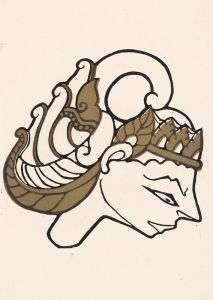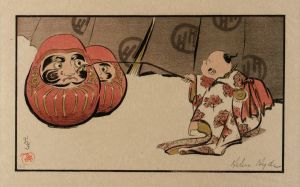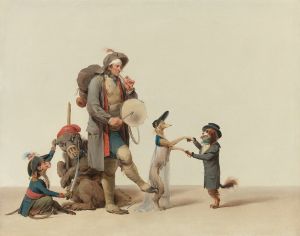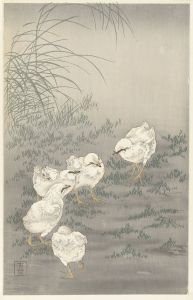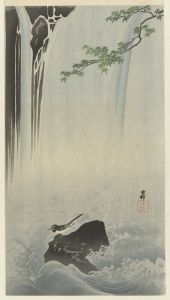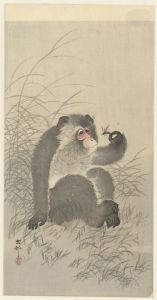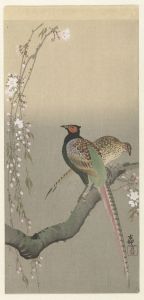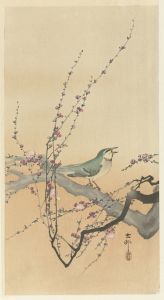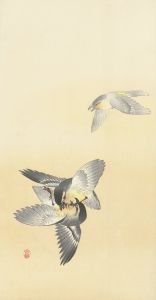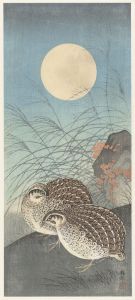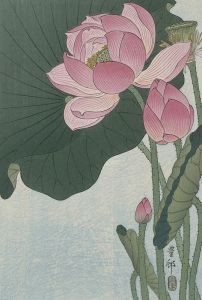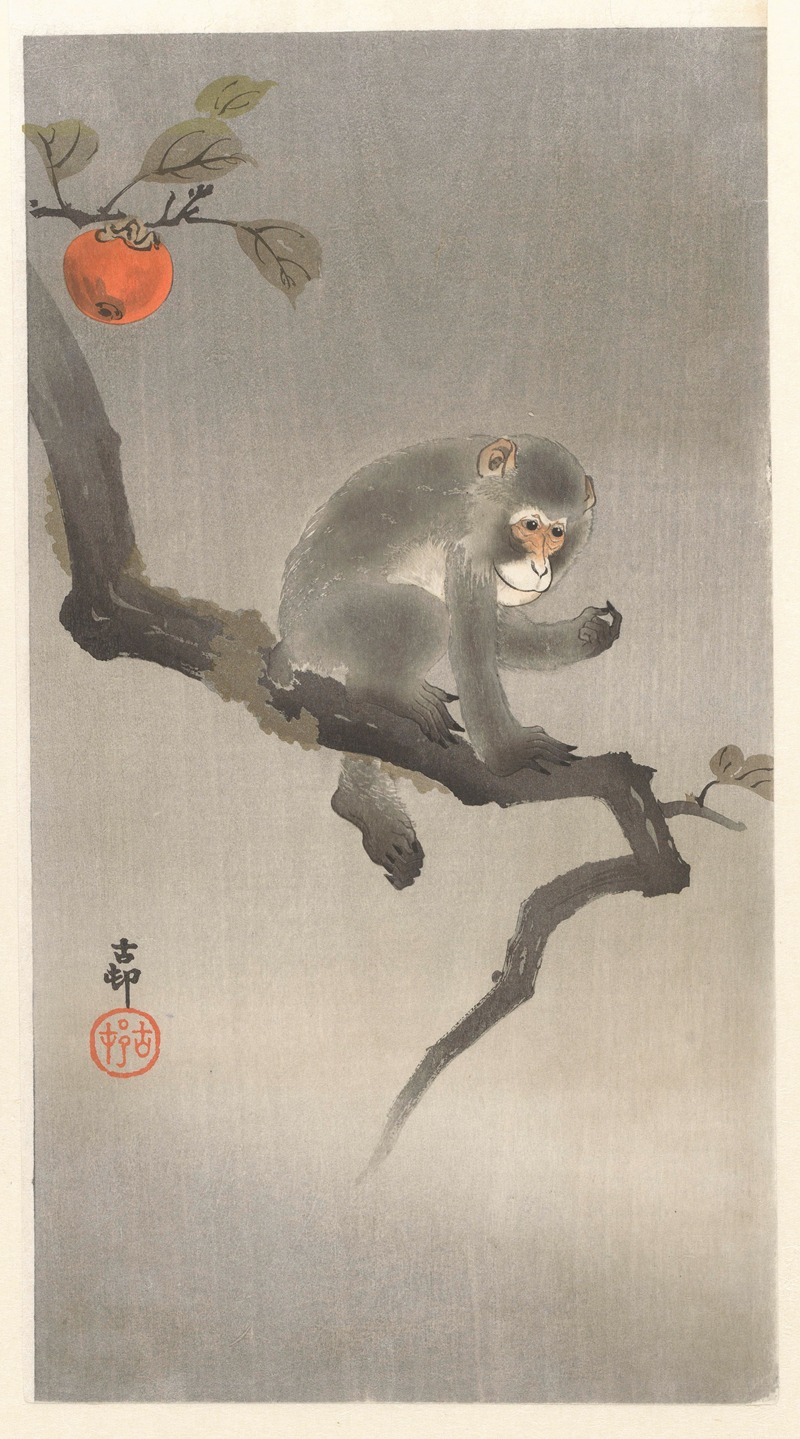
Monkey in kaki tree
A hand-painted replica of Ohara Koson’s masterpiece Monkey in kaki tree, meticulously crafted by professional artists to capture the true essence of the original. Each piece is created with museum-quality canvas and rare mineral pigments, carefully painted by experienced artists with delicate brushstrokes and rich, layered colors to perfectly recreate the texture of the original artwork. Unlike machine-printed reproductions, this hand-painted version brings the painting to life, infused with the artist’s emotions and skill in every stroke. Whether for personal collection or home decoration, it instantly elevates the artistic atmosphere of any space.
Ohara Koson was a prominent Japanese artist known for his work in the shin-hanga movement, which revitalized traditional ukiyo-e art in the early 20th century. His work primarily focused on kachō-e, or bird-and-flower prints, and he is celebrated for his detailed and vibrant depictions of animals and nature.
"Monkey in Kaki Tree" is one of Koson's notable works, showcasing his skill in capturing the essence of wildlife with elegance and precision. This particular piece features a monkey perched in a kaki tree, also known as a persimmon tree. The artwork is a woodblock print, a medium that Koson mastered, allowing him to create intricate designs with subtle color gradations.
The composition of "Monkey in Kaki Tree" is a testament to Koson's ability to blend realism with artistic expression. The monkey is depicted with a keen sense of movement and curiosity, its posture suggesting a moment of pause as it interacts with its environment. The kaki tree is rendered with attention to detail, each leaf and fruit meticulously carved to convey texture and depth. The use of color in the print is both restrained and effective, with the warm hues of the persimmons contrasting against the cooler tones of the foliage and the monkey's fur.
Koson's work is often characterized by its serene and contemplative quality, and "Monkey in Kaki Tree" is no exception. The print captures a tranquil moment in nature, inviting viewers to appreciate the simple beauty of the scene. This piece, like many of Koson's works, reflects the influence of both traditional Japanese art and Western artistic techniques, a hallmark of the shin-hanga movement.
The shin-hanga movement, which emerged in Japan during the Taishō and early Shōwa periods (1912-1945), sought to rejuvenate the ukiyo-e tradition by incorporating Western elements such as perspective and shading. Koson, along with other artists like Kawase Hasui and Yoshida Hiroshi, played a crucial role in this movement, producing works that appealed to both Japanese and international audiences.
"Monkey in Kaki Tree" exemplifies the shin-hanga movement's emphasis on natural beauty and technical excellence. Koson's ability to convey emotion and atmosphere through his prints has earned him a lasting legacy in the world of Japanese art. His works continue to be celebrated for their artistic merit and their contribution to the preservation and evolution of traditional Japanese printmaking.
Today, Ohara Koson's prints, including "Monkey in Kaki Tree," are highly sought after by collectors and art enthusiasts worldwide. They are appreciated not only for their aesthetic qualities but also for their historical significance as part of the shin-hanga movement. Koson's art remains a testament to the enduring appeal of nature and the skillful artistry of Japanese woodblock printing.





